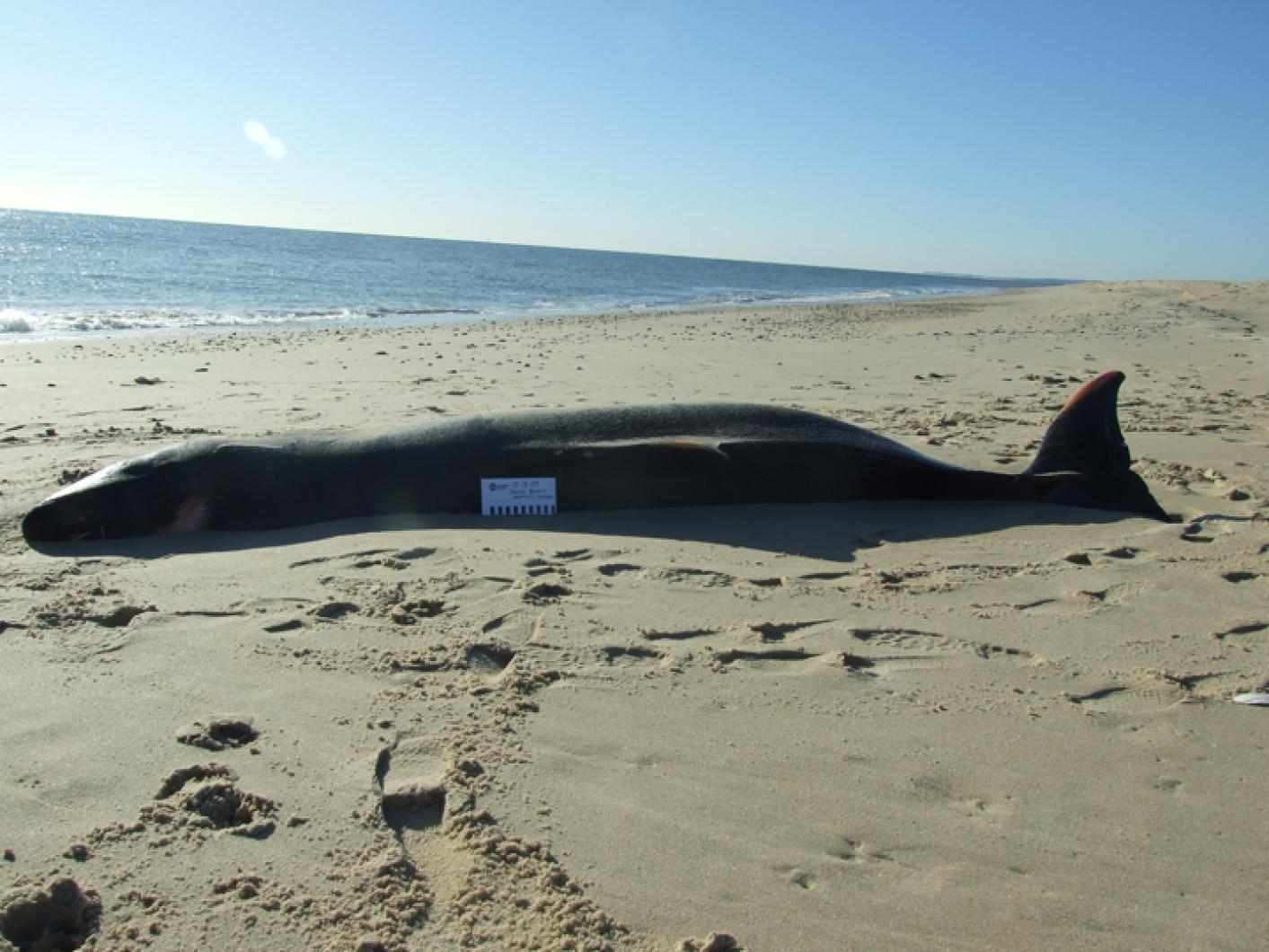It was the whale of a tale and the tail of a whale that brought me to South Beach on a crisp winter day last week.
The tail was a bit more than two feet wide and was attached to a body; a whale’s body. The rest of the story centered around this whale and its identity, though this tale did not have a happy beginning or ending. The mission at hand was to take photographs and measurements of a dead specimen that had been found on the beach.
It is not uncommon to find whales, seals or other marine mammals (or turtles) on Island beaches this time of year. If you find one alive or dead, call the New England Aquarium Marine Mammal Stranding Network at 617-973-5200, extension 4. Don’t worry, there’s a local network of on-Island volunteers to respond to calls. The Aquarium serves as the organizers: they respond to calls regarding marine mammals and sea turtles, keep track of such calls in their database, and contact the professionals and trained volunteers who can either help the animals or collect information on their demise, depending on the circumstance.
In this case, although it was dead, this whale was truly a beautiful and impressive creature. Its smooth black skin glistened in the sun, though scavengers had begun to help themselves to the softer tissues around the eyes and nose. Upon examination, its identity as a sperm whale was confirmed, though the type of sperm whale was harder to discern. Sperm whales are deepwater or pelagic animals, and most of the information known about them has been gleaned from beached whales, not from seeing them out in the open ocean.
Two of the subtypes of sperm whales are very similar to each other: pygmy and dwarf. They resemble each other in many ways. At one time, these two animals were thought to be the same species, but genetic research has recently allowed them to be identified as two distinct creatures.
The two species are called pygmy and dwarf due to their (relatively) small size; small is relative when you are speaking of whales. At the small end of the whale spectrum, their sizes are comparable to dolphins — though, impressively enough, they can reach lengths of 10 feet and weigh in at more than 350 pounds!
A few distinct features are used to differentiate between these two species, though they also have some commonalities. Both are members of the toothed whale group, and, as I said, both are sperm whales.
A brief digression on sperm whales: sperm whales are so named because they have a cavity in their head that contains a semisolid material called spermaceti. The spermaceti acts as ballast, helping them to dive deep and resurface effectively by allowing them to maintain equilibrium at differing depths. Of course humans have also found a use for this substance which was historically sought after for its use as a fuel, lubricant, ingredient in cosmetics, soaps and candles, and in leatherwork.
In addition to its commercial value, the sperm whale has another claim to fame. This species bears the responsibility for the ramming and sinking of the whaleship Essex, the story of which was famously related in Nathaniel Philbrick’s book, In the Heart of the Sea, The Tragedy of the Whaleship Essex.
On South Beach, with little information to go by, we became mammal detectives in order to discern which species we were examining. We first looked at the blowhole, which in the pygmy sperm whale is slightly to the left of the centerline. Then we noted the placement and size of the dorsal fin. The pygmy sperm whale’s fin is closer to the tail rather than centered on the body horizontally, and is shorter than the dwarf sperm whale’s fin.
The final clue that let us know that we had a pygmy was the teeth. Though both species are members of the toothed whale group, the pygmy sperm whale only has lower teeth, while the dwarf sperm whale may have up to three pairs of upper teeth. Strangely enough, even with only bottom teeth with which to chew, the pygmy sperm whale eats a healthy diet of crabs and other crustaceans, octopus and squid and other fish. Quite a testament to the efficiency of that one set of lower teeth!
With our identification, measurements and photos complete, we left, able to add a little bit to our species’ knowledge of theirs. We said goodbye to this worthy whale and let the tide take its remains back to the sea.
Suzan Bellincampi is director of the Felix Neck Wildlife Sanctuary in Edgartown.




Comments
Comment policy »